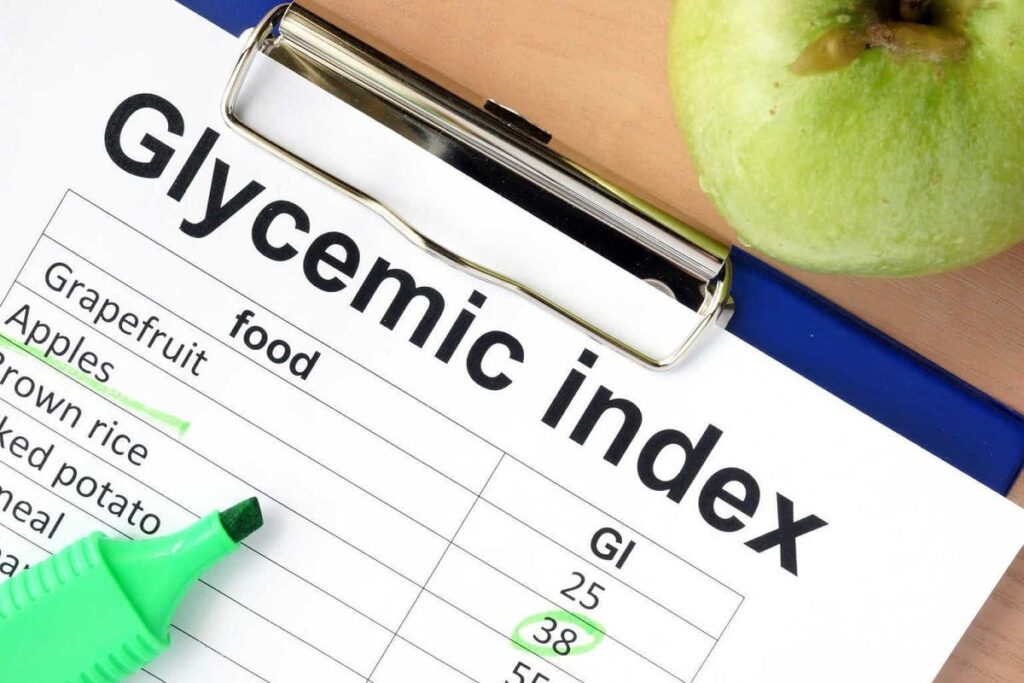What is the glycemic index?
The Glycemic Index (GI) classifies foods according to the rise in blood sugar after eating carbohydrates compared to glucose or white bread. We know 3 groups – foods with low, medium or high GI value. In addition to the GI, the term glycemic load also considers the actual amount of carbohydrates in the food.
Eat a piece of chocolate or a piece of wholemeal bread. Both contain carbohydrates, but their glycemic index values differ. How is the glycemic index (GI) determined and what influences it? How is it different from the glycemic load?
Determining GI
The glycemic index is determined by the subjects consuming a reference food – glucose or white bread. Blood glucose levels are measured every 2-3 hours. They further test the glycemic index of the selected food so that it contains the same amount of sugars and starch (usually 50g) as the reference food. Two curves are displayed on the graph. One belongs to the reference food, the other to the food for which the glycemic index is determined. The curve shows the concentration of glucose in the blood at a certain time after ingestion. The glycemic index of the food in question is the ratio of the area under the curve and the area under the curve of the reference food multiplied by 100.
Glycemic load
Besides the glycemic index, we know the term glycemic load. This also includes the actual amount of sugars or starch in the food. Multiply this amount in grams by the glycemic index of the food and divide by 100.
What affects the glycemic index of foods?
Many different factors affect the value of the glycemic index. Foods that contain starch, which is easily broken down by enzymes, generally belong to the group of foods with a high glycemic index. Enzymes break down the bonds in starch, releasing glucose, which is quickly absorbed and thus quickly raises blood sugar levels. These foods include e.g. white flour products and sources of readily available sugar.
The glycemic index of a food can vary according to the cooking time, storage, or age, which is difficult to include in the database of glycemic indices of food. During cooking, starch swells and thus becomes more digestible and accessible to enzymes.
The type of starch is also important. Starch consists of amylopectin and amylose. The former has a branched structure and is more easily digestible than amylose. Thus, different types of rice, with different proportions of amylopectin or amylose, also have different glycemic index values.
Resistant starch, dietary fibre, unprocessed cereal grains, fermentation of organic acid, fat and dietary protein reduce the glycemic index of foods.
The value of the glycemic index is also affected by the type of sugar. Foods rich in sucrose usually have a lower glycemic index than starchy foods. Starch is made up of glucose molecules themselves, while sucrose is made up of a glucose molecule and a fructose molecule. The latter has only a slight effect on raising blood sugar.
Foods divided into groups according to the glycemic index
Researchers at the University of Sydney divided foods according to the glycemic index into three groups – foods with the low, medium or high glycemic index. Among those with a low glycemic index, they ranked foods with a glycemic index below 55, with a medium glycemic index between 59 and 69, and with a high one above 70. The latter include sugary drinks, desserts, and regular white sugar. When we consume these foods, the amount of glucose in the blood increases faster and to a greater extent, which also leads to increased insulin secretion. The table shows the approximate values of the glycemic indices of certain foods.
Table of food glycemic indices
| GI < 55 | 55 < GI < 79 | 79 < GI |
| plums (53) | fruit muesli (67) | white bread (95) |
| oranges, strawberries (40) | pineapple (66) | wheat (90) |
| barley (27) | dates (62) | cooked rice (89) |
| grapefruit, cashews (25) | bananas (58) | sucrose (82) |
| peanuts (13) | apricots (57) | watermelon (80) |
